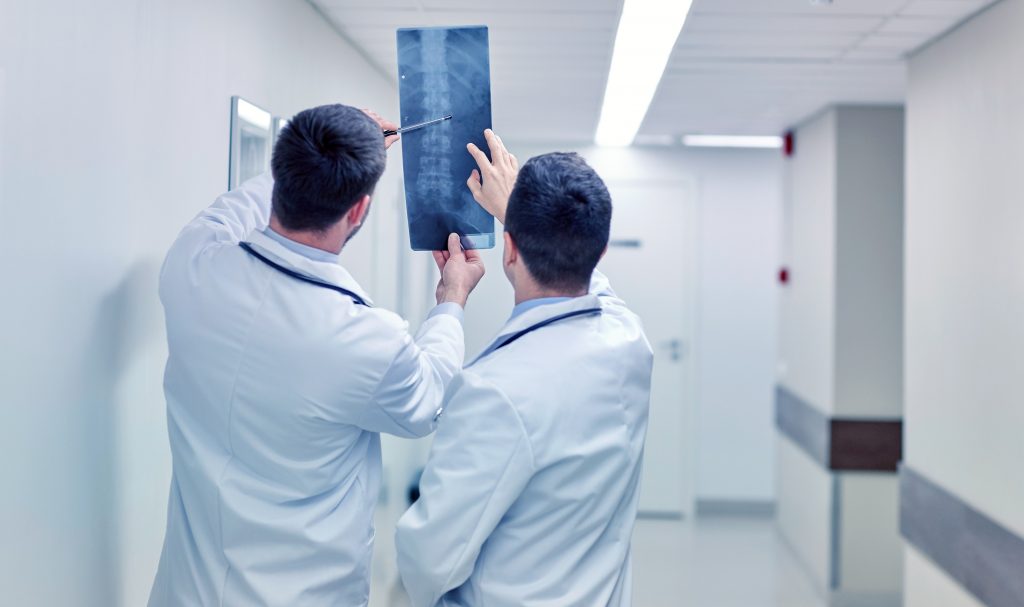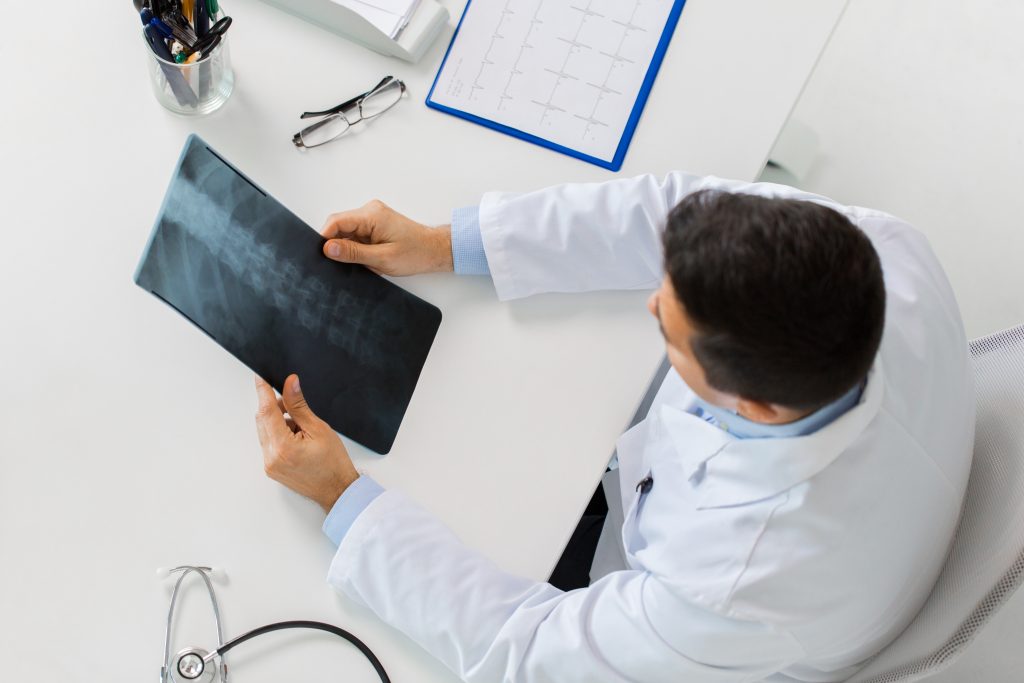Posterior Lumbar Interbody Fusion
Also known as PLIF surgery, a posterior lumbar interbody fusion is a relatively common surgery used to treat severe back pain. This is one of two surgeries that are usually used to treat pain in the lumbar region, or lower back. There are many different reasons that someone might need this surgery, but it is relatively simple to understand. The reasons may differ, but the cause of this procedure is to remove a diseased disc from someone’s spine that may be causing them discomfort, pain, or other problems. Degenerative disc disease is a common problem as people age. The discs in the spine can become damaged also through injury or overexertion. During a PLIF, the diseased disc is removed and the spine is fused together.
PLIF procedure
As with most surgeries, the patient is completely sedated for the duration of the procedure. Because the surgeon needs access to the lower back, the patient needs to be facedown for the surgery.
Exposing the diseased disc
The surgeon begins by making a three to six inch long incision over where the disc is to be removed. The skin and muscle is pulled back to reveal the vertebrae, discs, and nerves. This has to be done so as to not damage any of the tissue in that area. This exposes the spine directly. Then, the surgeon carefully removes the lamina, or outer bony portions of the vertebrae. This is known as a laminectomy. Once this is removed, the surgeon has a clear visual of the spinal cord, diseased disc, and any spinal nerve roots. A few other portions of the spine are shaved down and removed, and some nerve roots are moved out of the way, exposing the diseased disc.
Removal and Fusion
The diseased or herniated disc is then removed. Sometimes portions of the disc are left behind, but in many cases it will be completely removed. The doctor then inserts a grafting device called a cage. This will hold the surrounding vertebrae apart so that the spacing can remain the same, and keep the nerves from being compressed. Then a bone graft is placed inside the cage, and in between the vertebrae. This is bone material either taken earlier from the patient, or from a donor. This will hopefully grow, harden, and fuse the two surrounding vertebrae together. The surgeon then places several rods and screws them into place to provide additional support. These vary depending on the patient’s needs. The nerves are then re-arranged and the muscles placed back over the vertebrae. The incision is then closed.

PLIF technique
This specific technique can also be done in a more minimally invasive manner through a tube, but it is up to the surgeon. Some surgeries cannot be done in this way depending on the severity of the diseased disc or if the patient was injured. This technique is also done in such a way that the doctor is able to find the root of the issue, but it can be a bit more risky as well. If this surgery is not done correctly, a patient may still experience lumbar pain and the issue may not be completely resolved. Always speak to your doctor about the risks of any surgery before it is performed.
Benefits
The benefits of posterior lumbar interbody fusion can be life-changing for some patients! This kind of surgery avoids the need for a second incision, which can be much more invasive and harder to heal. There is also some evidence that placing the bone graft in the back of the spine instead of the front is more successful in healing because of the pressure placed on that area.
Disadvantages
Unfortunately, there are some disadvantages that can come with PLIF surgery. A spinal graft has to be small to be placed in the posterior part of the spine, where a larger one can sometimes be more beneficial for the patient. At times, this surgery can also cause something very painful and difficult to correct known as neural compression, caused by the grafting cages being pushed back into the spinal cord. This can cause permanent damage, but is also very rare. This surgery is also known for having a bit longer of a recovery time, especially if not done through a less invasive technique.
Recovery and Healing
Once PLIF surgery is completed, there will be a short stay at the hospital for about three to five days to ensure that the patient is stable and everything has been properly done. A physical therapist or other care doctor will usually instruct the patient on how to care for the incision, how to get in and out of bed, or other everyday activities that will have to be done with care. This is a crucial time for healing and rest. The patient is also instructed to avoid twisting, bending, or lifting for four to six weeks. Always follow your doctor’s instructions for aftercare of the wound and for physical limitations, as many people experience complications only because of their own carelessness!
Follow-up
Approximately about two weeks after the surgery, there will be a follow up appointment where the doctor will take x-rays and make sure everything is healing properly. Each person heals differently, but most people should be out of work for several weeks, and avoid any strenuous or intense activities for about three months. After this, most people can return to their normal lifestyle, and the pain should be manageable if not gone.
After Surgery and Recovery
About 90% of patients report experiencing improvement to their pain and consider their surgery successful. What a great rate! If you are experiencing lumbar pain, make sure to set an appointment with your doctor as soon as possible. Surgery is usually the last option, but a doctor can help you find out what is wrong and start you on a treatment plan. If you are considering back surgery, make sure to discuss the benefits and drawbacks with your doctor, and involve them in your decision. Surgery can be a great way to gain a better quality of life, but follow your doctor’s advice for you!

